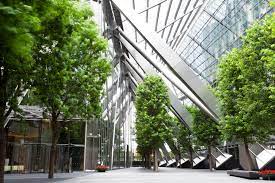The percentage of Africans who live in cities is predicted to rise by almost 60% by 2050, thus governments in emerging metropolitan centers should start embracing collaborations and skilled architectural practices.
During this year’s congress, which was co-hosted by Sweden and Kenya, the International Federation of Landscape Architects (IFLA) issued this urgent request.
The forum, which took place over two days on September 28 and 29, aimed to improve landscape architecture in light of Agenda 2030 for Sustainability.
This will be accomplished by investigating novel approaches to group problem-solving, cross-border tactics, and potential networks of collaboration, all the while putting the pressing concerns of social injustice, climate change, and biodiversity loss front and center.
According to data from the UN Department of Economic and Social Affairs, the percentage of Africans living in urban areas increased from 27% in 1950 to 40% in 2015.
According to the UN, “the population is expected to increase by at least 60% by 2050, which will exacerbate the climate change crisis and highlight the urgent need for collaboration towards building sustainable cities.”
Chief Architect Lawrence Mochama, speaking at the convention as a representative of the CS of the State Department for Public Works, stressed the government’s commitment to making cities sustainable in accordance with the debates from the African Climate Summit.
“We cannot save our biodiversity alone; cooperation is necessary. According to Mochama, the administration is dedicated to transforming urban areas into places where people may live with dignity as well as a hub for economic growth.
Caroline Vicini, the Swedish ambassador to Kenya, praised the efforts of the built environment professionals in both nations to exchange knowledge and address climate change.
“It is important to build smart, healthy and efficient cities where people can integrate, communicate and move freely. Landscape architecture plays an important role in shaping sustainable development,” she said.
President of Architectural Association of Kenya (AAK) Florence Nyole, stressed on the significance of cooperation within the built environment, as it enabled the professionals to reach shared environmental goals that rest on a foundation of social sustainability.
“Such congresses provide an opportunity to promote learning and collaboration among built environment professions to find solutions to the major global challenges,” Nyole said.
“The city of Nairobi for instance, relates very closely to the congress theme, ‘Emergent Interaction’, with rapid urbanization, dealing with climate change and adequate housing as priority issues.”
She however says the country faces a huge gap in the incorporation of required professionalism in architectural work, saying only 20 percent of the buildings in the country have been built with the input of environmental specialists who enforced sustainability measures.
“The remaining 80 per cent is a clear gap that needs a tap in, hence the need for more collaborative frameworks in sharing of ideas and solutions in betterment of our cities.”
The International Federation of Landscape Architects (IFLA ) is a global body of landscape architects represented through national member associations spread through Africa, the Americas, Europe, Asia Pacific and the Middle East.
IFLA’s mission is to promote the landscape architecture profession within a collaborative partnership of the allied built-environment professions, demanding the highest standards of education, training, research and professional practice, and providing leadership and stewardship in all matters.
